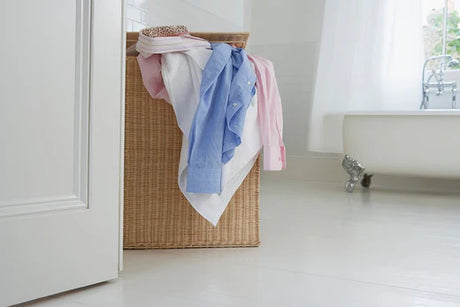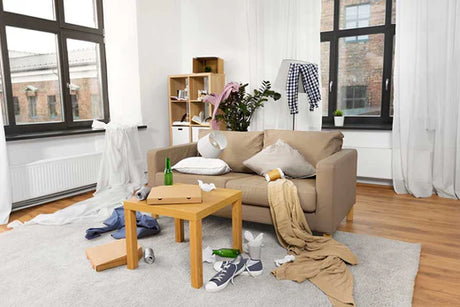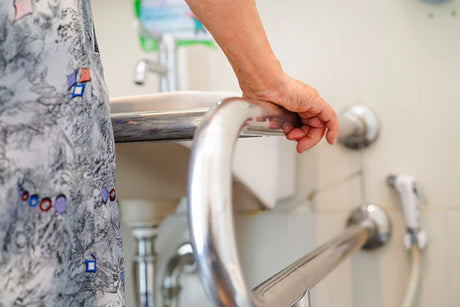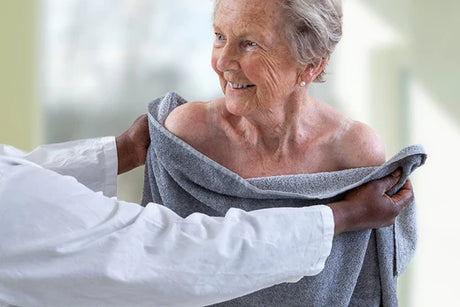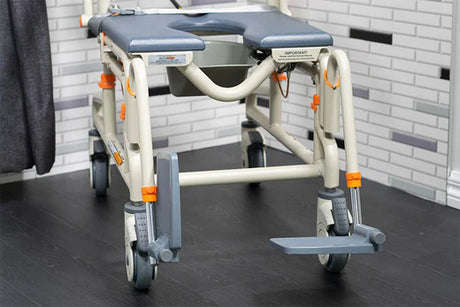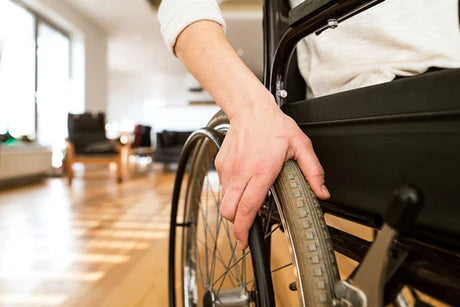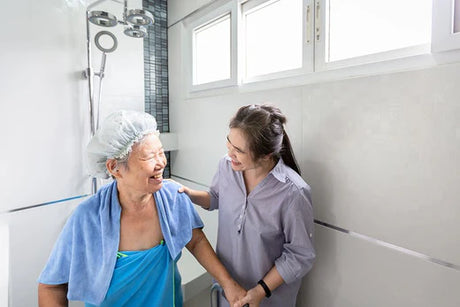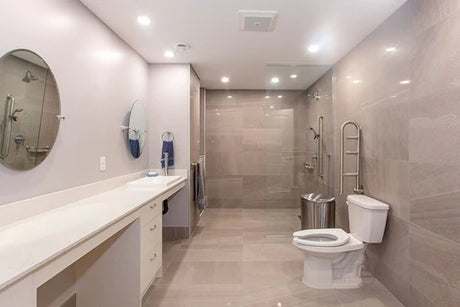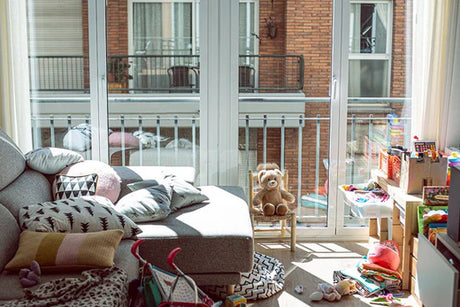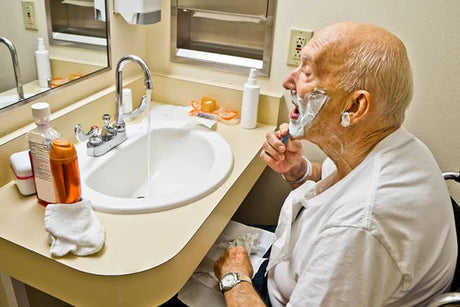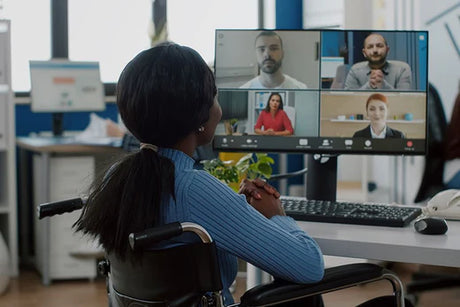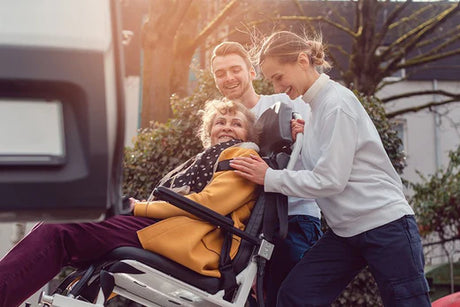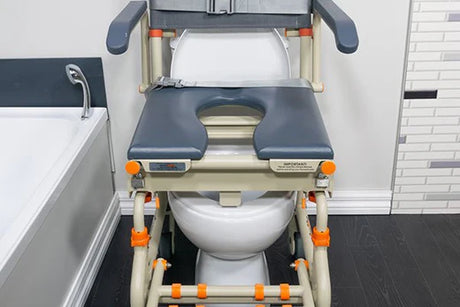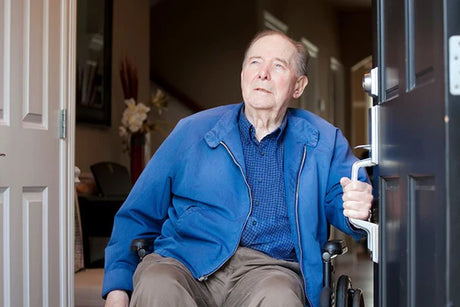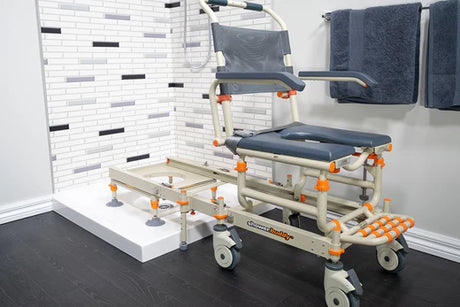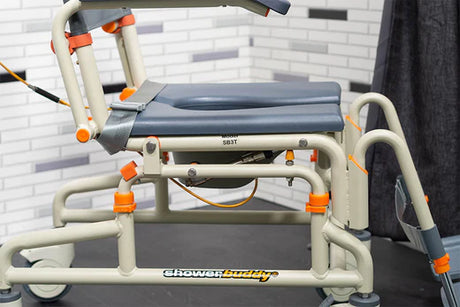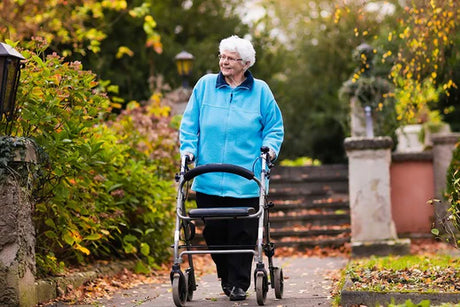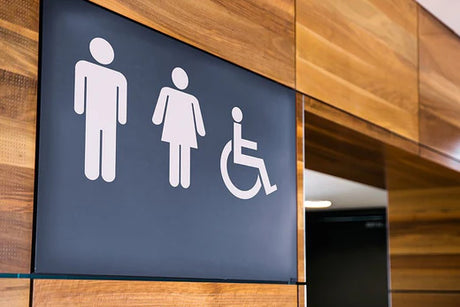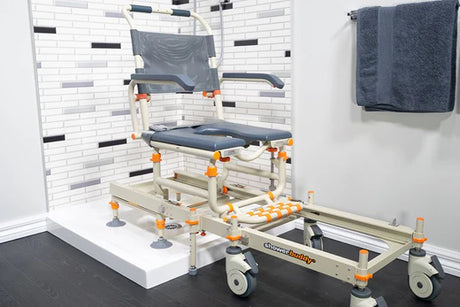Declutter the home
Lots of loose items and surplus of furniture in rooms simply creates more potential to catch a foot or item of clothing. Trips and falls are common in an overly cluttered home, as are items falling onto people that are over-stuffed on a shelf.
With the loss of mobility, your elderly parents may need the aid of a walker, wheelchair, mobility scooter or walking stick. All of these are incompatible with a cluttered home.

Rearrange rooms to suit reduced mobility
Some factors to consider as you rearrange the room include:
- Are all items within easy reach? I.e. not kept on high shelves that can’t be accessed.
- Are couches and armchairs kept away from doorways and other access points?
- Have knee-height tables and rests safely kept away from walking areas – or removed entirely?
- Have all tables, chairs and other large furniture been set out in a way that reduces the time and effort to get to them?
- Are all daily kitchen utensils placed where they can be used easily?
- Have you removed or tidied up furniture that previously demanded a lot of cleaning, e.g. shelves with many ornaments.
Your parents’ home will have its own considerations as well. What you should consider aiming for is somewhat minimalist without removing the character from your parents home entirely. Remember, it’s their home and they need to feel comfortable and happy.
Ensure entrances and exits are barrier-free
You should also check all doors around the house to ensure they’re in complete working order. Sliding doors should be able to open and shut with minimal effort (and to lock/unlock). You should make sure to test this with your elderly parents as they’re the ones who need to be able to do this alone.
Get support for keeping the home running smoothly
Depending on what your parents require help with you may engage services that can:
- mow lawns and weed the garden,
- cook and serve meals,
- clean the home regularly,
- pick up and drop off your parents to places like the supermarket or social events,
- deliver food,
- help with getting dressed,
- help bathing and using the bathroom,
- and many other activities you may need.
It’s common for families to share the duties of caring for elderly members between each other, but make use of external support services as well. There’s no one perfect approach here- it will depend on factors like family member availability, ability to help, proximity, the elderly members’ willingness to accept help from certain directions, budget for paid support and a number of other factors.

Make use of assistive technology
Technology and medical equipment is fast evolving and that’s helping elderly people live independently for longer. Assistive technology may be as simple as a voice activated assistant to turn the light on through to a sophisticated bathroom mobility solution.
Assistive technology’s job is to lighten the load of the individual with mobility challenges as well as the reliance upon other human beings. It’s not a complete replacement for carer/family member support however, and care should be taken to ensure that your elderly parents understand how to make use of the equipment properly.
With that said the right mobility equipment and technology can be an absolute gamechanger. For some, it’s the difference maker between staying in their own home and being moved into a retirement care facility. In the context of bathroom use, solutions like Showerbuddy alleviate manual strain in the bathroom by taking care of the transfers, bathing, toileting and more. We have many users who are elderly couples with one helping the other during the bathroom routine. With neither having the strength for manual lifts, solutions like Showerbuddy are crucial.
Learn more about Showerbuddy
Showerbuddy provides a range of transfer systems that fit most bathrooms around the world. Our system allows comfortable, sturdy movement around the bathroom to conduct your daily routine. Thanks to the smart design, users are afforded more independence and dignity in the bathroom. You can learn more about Showerbuddy or, get in touch with our team to arrange a demo with your nearest distributor.
Further reading
Enjoyed this article? You may be interested in these resources online:








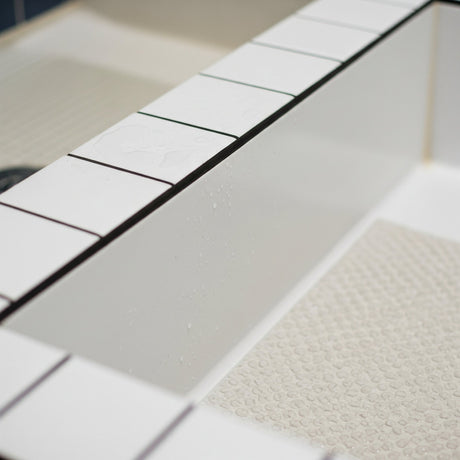

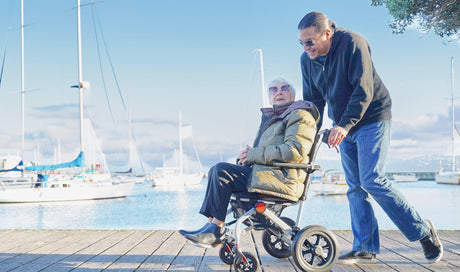
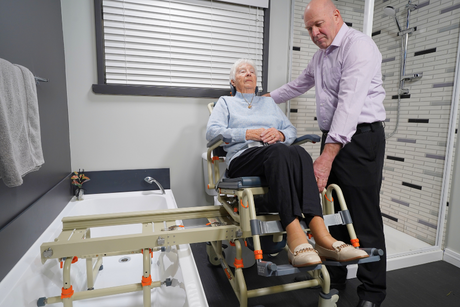
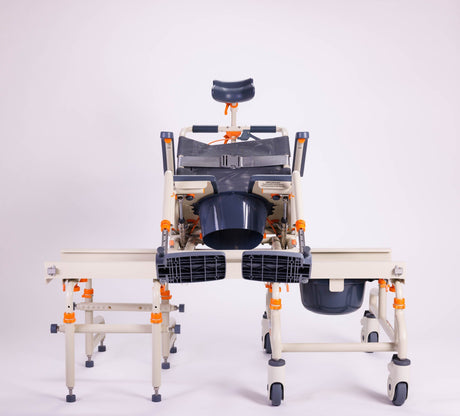
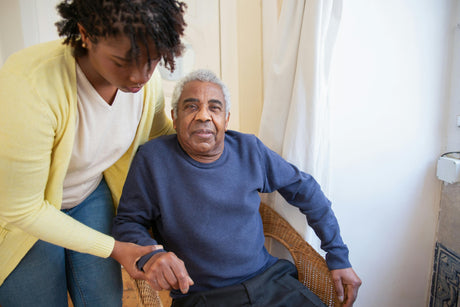
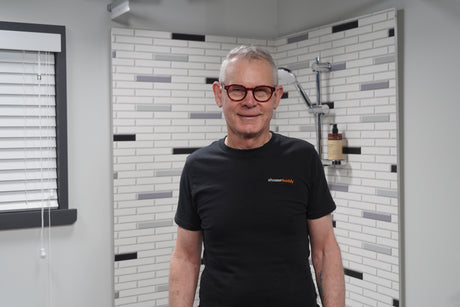
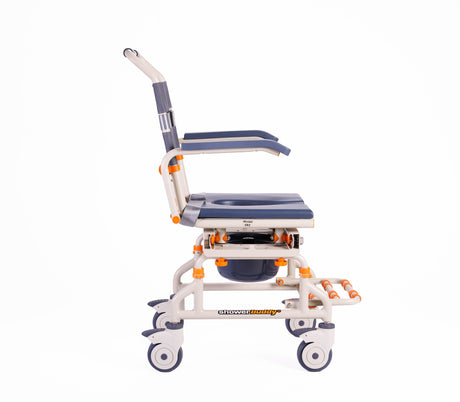
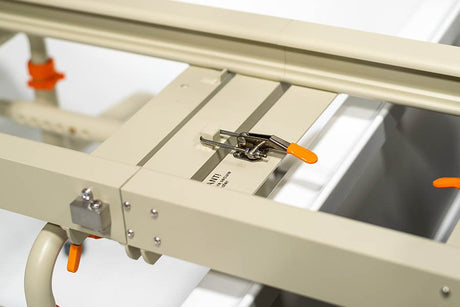
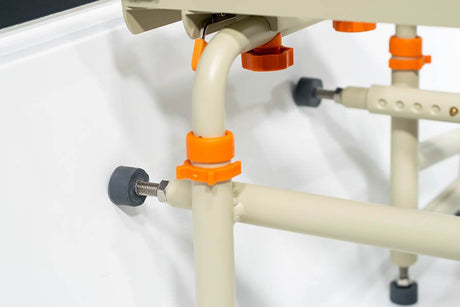
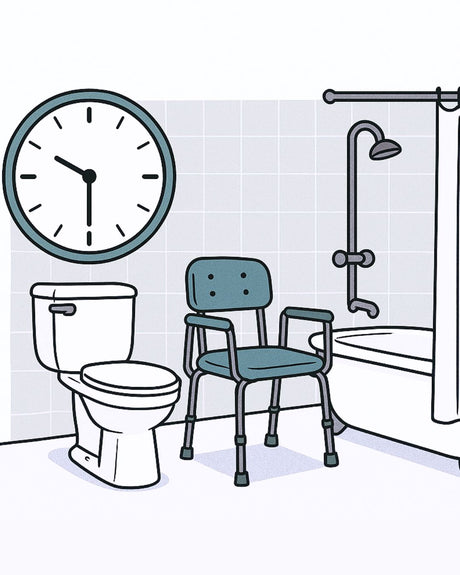
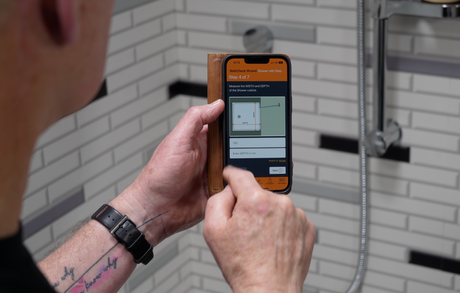
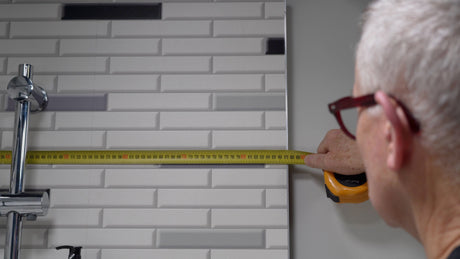

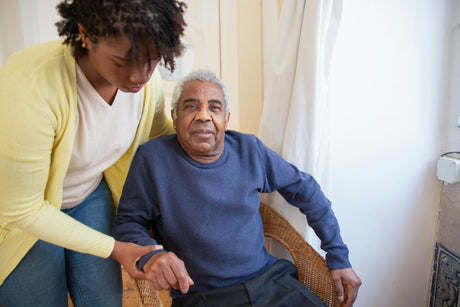
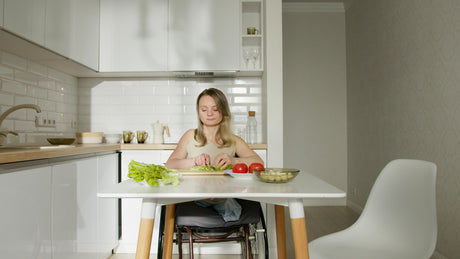
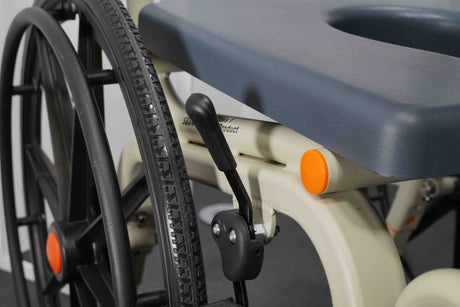

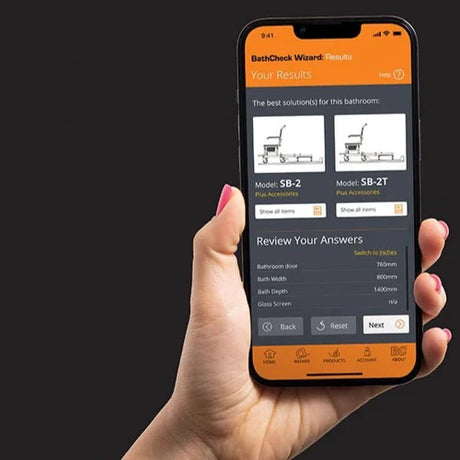
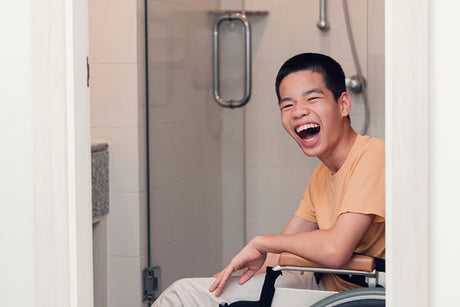
![Toilet Training A Young Child With Mobility Challenges [And How A Shower Chair Can Help]](http://shower-buddy.com/cdn/shop/articles/toilet-training-disabled-child_520x500_a90e5234-d372-435d-aa56-8da15dd3836c.webp?v=1722557239&width=460)

